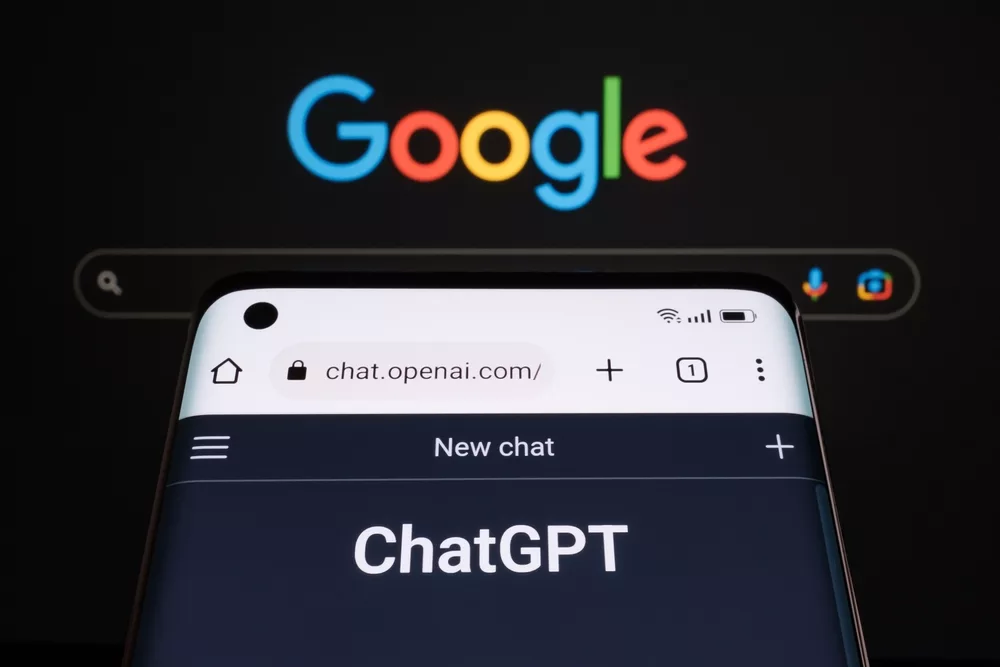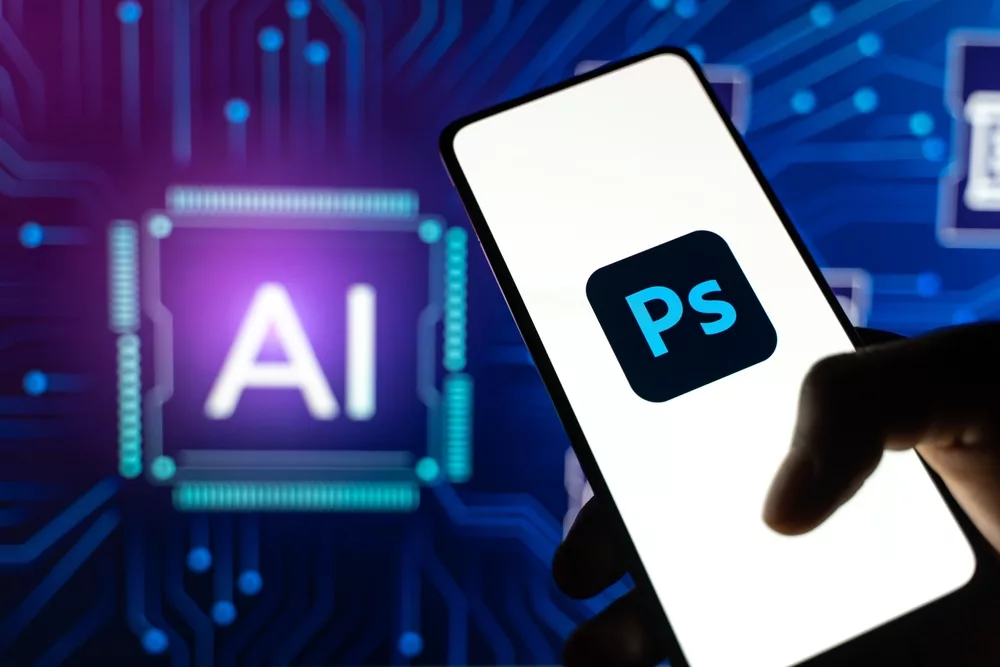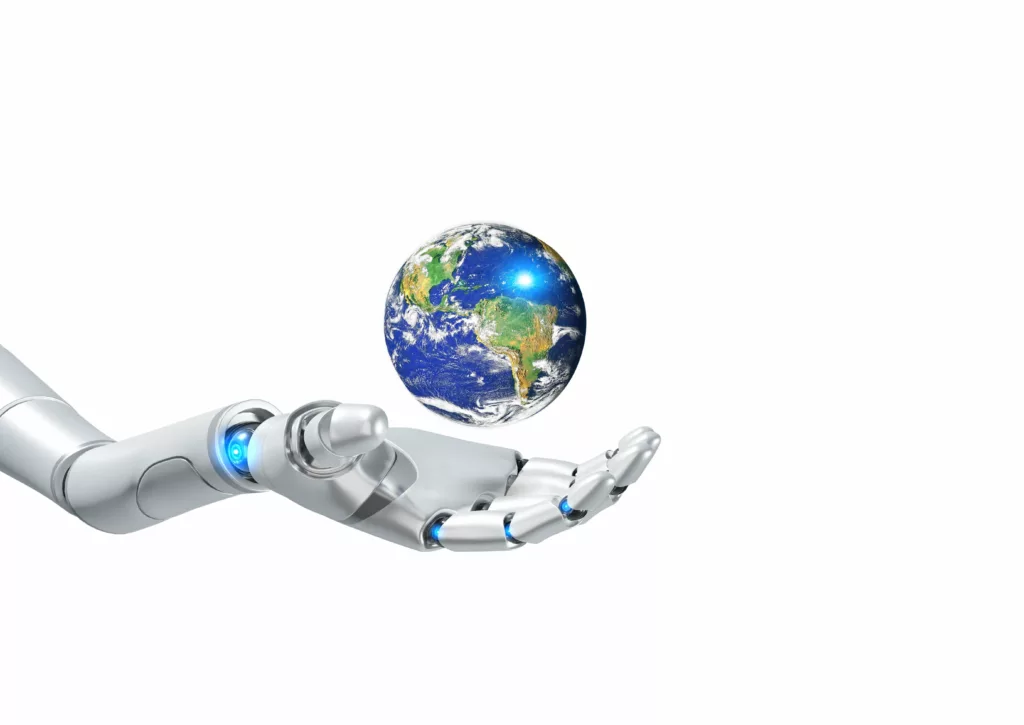November 14, 2024
A guide to generative AI for marketing teams
In the immediate aftermath of ChatGPT’s meteoric rise, we semi-confidently stated that people would remain the most important cog in the ever-evolving machine that is marketing.
It’s been quite some time since then. The dust has settled, and the marketing sector has not, as some predicted, become a barren wasteland of robots and sentient code.
So what impact has AI actually had on the industry? Now that we’ve had some time to get to grips with the tech, how are we using it? Are we using it? Has anything we said before held true?
And, perhaps more importantly, how can you use it? Let’s get into it.
Generative AI and marketing
When ChatGPT exploded onto the scene at the end of 2022, predictions were lofty. This was a technology that would change the world, its impact likened to the printing press and the invention of the internet.
In mid-2023, a McKinsey report estimated generative AI could contribute up to $4.4 trillion in annual global productivity. 75 percent of that would come from marketing and sales.
The potential seemed limitless. From ChatGPT’s first iteration to 3.5, then 4, every update seemed to bring an almost incomprehensible level of progress. With such rapid improvement, the world could barely catch its breath: what would AI be capable of in a year, or five years? Would humans become obsolete as we moved towards an AI-dominated digital landscape?
In 2024, the excitement has muted somewhat. Improvements have slowed to a more incremental pace, or, as OpenAI has admitted, in some ways, performance has worsened. Questions are already being asked as to whether AI has peaked.
After such grandiose claims during its rise, it’s unsurprising that rumours of generative AI’s decline would be similarly sensationalised. The truth is somewhere in the middle: AI has left its mark in marketing, even if the shift is more subtle than seismic.

AI and content: your least reliable assistant
AI content is a world filled with deep dives, conjunctions and tired clichés – familiarly average and frequently untrustworthy. It’s inescapable online; according to a study published by Amazon Web Services, 57 percent of web-based text is already produced by generative AI.
Previously, we discussed concerns about the homogenisation of content: would content become so similar due to AI, that readers would lose interest? The reality takes it one step further. ChatGPT scrapes from data on the internet: over half of which, as we stated above, is now AI-produced work. As AI content begins to cannibalise itself, the quality quickly starts to degrade.
This downward spiral could lead to model collapse: the more the internet is flooded with AI-produced content, the worse this is likely to get.
AI “hallucinations”
Like the first date hanging on your every word, eager to please and impress – generative AI tells you exactly what it thinks you want to hear.
AI will never admit it doesn’t know the answer to something. It would rather give an incorrect answer – and confidently, at that – than own up to its limitations. These false answers are called “hallucinations”, and despite all the efforts of AI experts, they are no closer to being resolved.
If you ask it leading questions, or about a niche topic, you’re more likely to get a hallucination in response. Generative AI is gullible, too often mistaken to be relied upon in any serious context, which is why its use is limited within the content team.
Despite all this, we (the OneAgency copywriters) use AI frequently, but very carefully; for content purposes, a slight scepticism is the right approach. It can be a starting point for research, trigger inspiration, adapt or shorten text, find that niche pop culture reference you can’t quite remember, or, most often, be a fantastic, responsive thesaurus. AI-assisted transcription is also a brilliant time saver (for the English language at least!).
We rarely use AI to write content; it’s not of the level required. Especially for our client base, who often operate in niche sectors where specific, technical expertise is paramount. For brands that trade on trust, we need to create content that can be trusted. And at the moment, AI can’t do that.
Not to mention, we believe that people like to read content written by people. And Google agrees – to meet Google’s helpful content update, content needs to be worth reading; human editing is almost always required to meet that criteria.
It’s easy to make B2B content that’s dull, or obvious. But to truly engage and entertain, a different, more creative approach is needed. Instead, AI can help fill the gaps, give you some tips, and connect a few dots. It’s a tool that helps us be more efficient – and even with its failings, we use it more days than not.
Digital marketing: will AI search dethrone Google?
It’s not just the content itself that is being influenced by AI: how people find content is starting to change. AI search has announced itself as a player in a field long dominated by a single corporation. So, should Google be worried?
OpenAI, the company behind generative AI’s heavy hitters like ChatGPT, unveiled plans for SearchGPT in July 2024. This prototype addresses the main criticism levied at AI – it provides real, verifiable sources to support its claims. AI search is nothing new; Perplexity AI is already a frontrunner, worth over a billion to investors. But SearchGPT has the potential to be even bigger.
SearchGPT answers queries by scanning the internet and collating what the software views as the best results. Instead of pages upon pages appearing, they will be cherry-picked to only a handful of links.
This move may be music to the ears of brands and content creators; instead of taking from their work, AI will be crediting them – and actively driving traffic to their website. As Google has taken the step to add AI overviews at the top of search results, which some publishers may view as taking potential clicks by summarising their content, alternatives such as SearchGPT may even be welcomed by content creators.
The Wall Street Journal argues Google’s dominant position in the ad market may well change. AI search in its current state doesn’t include paid search results – though this may happen in the future – giving it an extra authenticity that Google currently lacks. If AI search were to be incorporated with social channels, people could go directly from platforms that ‘inspire’ to a product page – removing the ‘middle step’ of Google.
Will consumers value the authenticity of AI search, filling a void just starting to be felt by the fall from grace of influencers? Or, as OpenAI shrugs off its non-profit status, will paid results soon be incorporated into AI search?
Of course, nothing is certain with AI; but the potential is certainly there.
The rise of AI search will push digital marketing into unknown territory. How will AI judge the most valuable content? It’s a relatively unknown area, but quality will likely be even more important moving forward.

How can you use generative AI to increase efficiency in digital marketing?
Our digital marketing team is keeping a close eye on emerging AI technologies. While it’s only in its infancy, we’re monitoring the recent emergence of AI search – and what it might mean for the future of how we operate.
AI is already incorporated into everyday processes to improve efficiency and inspire new thinking. These are a handful of ways the digital team are using it:
– Product descriptions. Helps save time writing new copy for products, even if they’re very similar; it was able to provide variety and a warm tone.
– Excel formulas. ChatGPT can help break down different Excel formulas for beginners
– Quickly mocking up social assets as examples for clients
Where it has lacked:
– Inspiration for PPC headlines. It struggled to produce quality within the relevant character limits. It was often too literal from the landing page, and could not write keyword-led headlines well
– Optimising titles and descriptions for SEO. With the keyword and a rough framework it does a decent job, but it needs significant human input.
Creative and AI: the sky’s the limit
“With generative AI a major disruptor of our creative work has emerged.” The Harvard Business Review’s statement on AI all the way back in November 2022 aligns with the quite dire predictions for creative industries at the time.
Early fearmongering of AI replacing human creativity thankfully hasn’t been realised. It may be a disruptor in that it has changed the way we work, but this hasn’t manifested in any negative sense. AI has become ubiquitous, a pervasive presence in the tools we use, but has only aided the creative process, not derailed it.
Our creative studio has found AI a valuable tool for improving efficiency – allowing them more time to do the actual creative thinking. It’s no replacement for a creative mind, lacking emotional depth, but can help speed up small tasks.
These are a few ways the creative team are using AI:
– In Photoshop, it can be used to adjust things slightly to save time. E.g. remove a word, mask something, provide generative fill etc. It’s most often used to change the colour of the sky.
– Using generative AI, like DALL.E-3, to quickly mock up ideas and help get the concept across.
– Can explore different colour palettes quickly.
– Allows you to change the wording for the same graphic quickly.
– Can perform automated accessibility checks; AI can quickly identify issues with readability, colour contrast etc.

Adobe has invested heavily in integrating AI tools; they are mostly useful for smaller tasks, and, if thoroughly checked, can look professional. The team suggested AI has its limitations (particularly where images of people are concerned), and can sometimes be a bit hit and miss, but find AI to be useful – and use it day-to-day.
AI’s best suited to small tasks, but it’s not limited to them.
The ability of AI to produce millions of designs almost instantaneously doesn’t mean much for quality, but it does open up opportunities for personalisation on a mass scale. Long before OpenAI and DALLE-3, Nutella used an AI algorithm to create seven million unique versions of their packaging in Italy. It’s a quick and easy way for a brand to create scarcity – with the improvements in the technology since, the opportunities have only widened.
Controversy surrounding creative AI tools
Generative AI is no stranger to controversy, but the use of image and video generation tools seems to attract the bulk of it.
It’s something for marketing teams to be aware of. As lawless as the world of generative AI currently is, restrictions may soon tighten. The appearance of deepfakes, even in political campaigns – for those unaware, Donald Trump shared AI-produced endorsements from Taylor Swift – has raised fears over its use.
The quality of generative AI is such that even judging panels can be fooled; remarkably, an AI image won the Sony World Photography Award in 2023. People are understandably concerned about the potential for misinformation. Steps are slowly being taken to address this; Meta, for example, has started labelling AI images – but more will likely be done to mitigate the damage.
Videography: pushing post-production productivity
Like the creative studio, our videography department is benefiting from the productivity boost provided by AI. It’s a tool that has been seamlessly integrated into software, improving efficiency and opening up more opportunities for on-site shoots.
It’s during post-production that AI has had the most impact. You can process and enhance audio, which allows you to isolate voices and background noise. This takes the stress out of on-set production, and the lack of control over your environment. A station, for example, would be tricky because of noise levels but is now accessible for shoots thanks to AI.
Cameras are also improving; the software understands eye tracking, with exceptional face detection-autofocus. You can shoot shallow, dynamic close-ups thanks to the technology, without worrying about people going out of focus. The amount of equipment needed for gimbal shots is also reduced – cameras are now more accurate, and require less battery power.
Videographers can enjoy more creative freedom thanks to AI, and speed up tasks that were once immensely time-consuming. When Sora, the text-to-video generative AI, is released for public use, it may shake up the traditional work of a videographer further.
Development AI: time saver or security risk?
Generative AI for coding is still in a relatively early stage, but has potential to be a major force in improving efficiency and productivity. In theory, tools like Github Copilot can write basic code for developers, allowing them to spend more time doing advanced, innovative development.
Our development team rarely uses the technology, however, due to the problems posed by it. Even for basic code, it can provide mixed results, requiring heavy intervention to be usable; which can end up taking longer than doing it from scratch. There are fears that AI code can compromise the security of a site, leaving it vulnerable to attack. When slight issues in code can cause huge problems for a website, using AI is a risk that many are unwilling to take.
But, as is often the case for generative AI, the software can be useful as a starting point, or for shifting writer’s block when approaching a coding problem.
According to AI itself, it can help with:
– Writing code: can generate code based on natural language instructions, or translate code from one language to another.
– Completing code: can suggest code completions as a coder types, which can save time and reduce errors.
– Reviewing code: can check code for consistency and suggest improvements.
– Fixing bugs: can identify and fix bugs in code.
– Testing software: can generate test cases, test code, and analyse test results.
You can see from this AI snippet alone that the technology doesn’t give the most nuanced response. It may have the potential to perform these tasks, but it’s not quite there yet.
The future of AI
As ever, changes are on the horizon for AI. Sam Altman, CEO of OpenAI, once stated: “I think AI is going to be the greatest force for economic empowerment and a lot of people getting rich we have ever seen.”
Unsurprisingly, “A lot of people” may be closer to home than Sam Altman was willing to admit: OpenAI is moving to remove non-profit control and give Sam Altman equity. OpenAI becoming a for-profit organisation only adds to the uncertainty surrounding its future.
While AI isn’t going anywhere, with all its controversies, lawsuits, and constant changes, its future still feels unclear. A cautious approach to integrating AI is therefore essential.

Ethical and environmental concerns
In any discussion of AI, you can’t avoid the elephant in the room. For brands conscious of their impact, AI is likely to collide with their brand values in catastrophic fashion.
While we discussed its terrible track record with workers and ethical concerns with copyright previously, we hadn’t broached the topic of its environmental impact. It’s not just the S and G you have to worry about with AI – there’s plenty to discuss for the E of ESG as well.
Forbes found that the cooling systems for AI’s huge servers are “causing up to 9 litres of water to evaporate per kWh of energy used.” To put that into perspective, almost half a litre of fresh water is used with every prompt.
Any company that takes its ESG credentials seriously may take issue with AI usage – at OA, we respect any requests to avoid using AI by our clients.
Some brands are playing on AI’s pitfalls to create clever campaigns. Girlguiding found that prompts such as ‘someone playing football’ and ‘someone being a leader’ would generate images of men – and used this as the basis of a powerful campaign reinforcing their message.
AI: part of the marketing toolbox
AI is here to stay. 95 percent of marketing professionals say using AI helps them spend less time on manual tasks. This is reflected at OneAgency, where most departments have incorporated it into their daily processes – or are monitoring its potential.
As we predicted, it is a tool, not a replacement, and one we are taking full advantage of.
It’s a very useful tool in a marketing team’s toolbox – but it is only that. We are using AI to free up time, allowing us to add value where the human mind really triumphs over computers: with strategic and creative thinking.
You can take advantage of AI technology to increase your team’s efficiency and productivity. Spend less time on the manual tasks and more on the big thinking: contact us today to find out more about how you can use AI to bolster your team’s marketing efforts.
Written by Jo Luffman, with contributions from the creative, digital marketing and social teams.
Want to know how AI technology can benefit your business?
Get in touch
